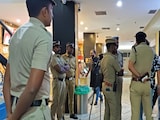- Israel struck multiple high-value nuclear and military sites deep inside Iran's territory
- Natanz facility, Iran's main uranium enrichment centre, was a key target of the strikes
- Fordow, a heavily protected underground nuclear site with advanced centrifuges, was hit
In a calculated show of force, Israel has struck deep inside Iranian territory, targeting a series of high-value nuclear and military installations. Satellite imagery analysed post-strike reveals the scope and precision of the operation. It's a move that could yet again significantly alter the strategic landscape of the ever-shifting sands of West Asia.
These strikes were precise, and each location hit is tied directly to Iran's nuclear enrichment capabilities, missile production, or air defence systems. Here's a breakdown of the key targets and why they matter:
Natanz: The Heart Of Iran's Nuclear Ambitions
Known as "Iran's crown jewel of uranium enrichment," Natanz operates over 50,000 centrifuges, many buried underground. Officially called the Shahid Ahmadi Roshan Nuclear Facilities, it has long been a focal point of international concern.Here is a comparitive view of the facility before and after Israeli strikes.
Isfahan: Nuclear Brainpower Since 1984
Established with Chinese support in 1984, Isfahan houses Iran's largest nuclear research centre within the University of Isfahan. Nearly 3,000 scientists work here. Four critical research buildings were reportedly struck in the recent attack.
Fordow: Iran's Fortress Under a Mountain
Located just 160 km from Tehran and built into the mountains, Fordow is Iran's most heavily protected nuclear site. It houses over 1,000 advanced centrifuges, including IR-6s capable of enriching uranium to 60%. The facility was designed to resist aerial bombardment.
Piranshahr: Shielding the Western Skies
Situated near the Iraqi border, Piranshahr is a military bastion integral to Iran's western air defence shield.
IRGC Ghadir Site, Tehran: Eyes on the Sky
This radar installation forms part of Iran's early-warning defence grid, helping detect incoming aerial threats and coordinate rapid responses.
Tabriz Missile Facility: Long-Range Firepower
In northwestern Iran, the Tabriz site supports the development and deployment of long-range missile systems, including Shahab-1, 2, and 3. Analysts suggest this facility places parts of Eastern and Central Europe within theoretical range.
Mashhad Airfield: Strategic Reach
As Iran's second-busiest airport and a major military hub, Mashhad supports long-range air force missions. Located 2,300 km from Israel, the strike here echoes the historic 1985 Israeli bombing of the PLO in Tunis: one of Israel's farthest military operations to date.
Dezful Airbase: Guarding the Oil Lifeline
Home to Iran's 4th Tactical Air Base, Dezful is a frontline facility near the Iraqi border. It hosts Shahed-136 drones and F-5 fighters and plays a pivotal role in protecting Iran's oil infrastructure.
Kermanshah: A Legacy of Missiles
Dating back to the Iran-Iraq War, the Kermanshah base remains an active missile launch hub, reinforcing Iran's longstanding regional defence doctrine.
Shiraz Missile Site: Behind the Flames
Though satellite images show active fires and scorch marks, no major damage is visible at the Shiraz site. This facility is vital for producing missile fuel and components for systems like Shahdab-1.
At A Dangerous Crossroads
On the surface, Israel appears to be edging closer to dismantling Iran's nuclear infrastructure. But experts caution that Iran has rebuilt before and could do so again within months. And perhaps more troubling, these strikes might only harden Tehran's resolve, accelerating its nuclear ambitions rather than halting them.















